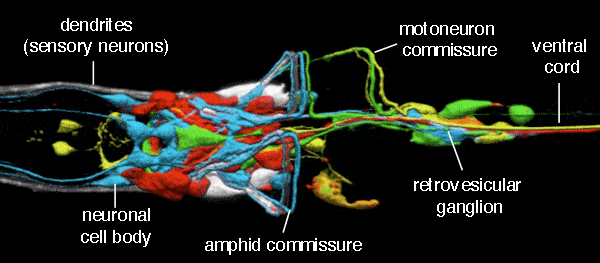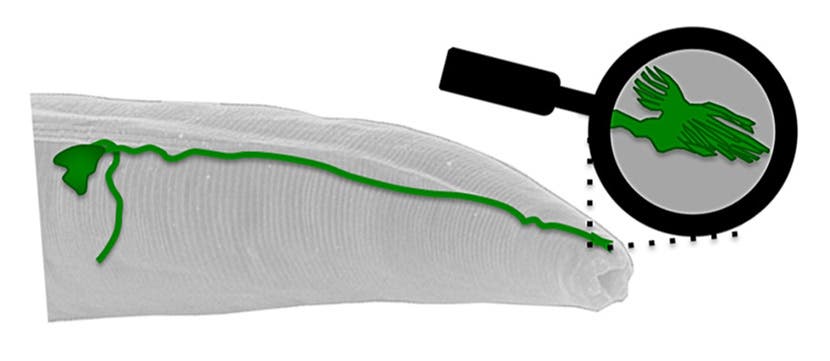It’s no secret that many animals can sense the Earth’s magnetic field, but until now, researchers didn’t know exactly how they could do this – what the sensor was. Now, a team from the University of Texas at Austin has found a simple, antenna-like structure in the brain of the simple worm C. Elegans that appears to be able to detect magnetic fields.

Discovered in an earthworm named Caenorhabditis elegans (C. elegans for short), the sensor is basically a neural ending, protruding from the brain. This gives scientists hope that other animals also exhibit the same feature.
“Chances are that the same molecules will be used by cuter animals like butterflies and birds,” said Jon Pierce-Shimomura, assistant professor of neuroscience in the College of Natural Sciences and member of the research team. “This gives us a first foothold in understanding magnetosensation in other animals.”
The study’s lead author is Andrés Vidal-Gadea, a former postdoctoral researcher in the College of Natural Sciences at UT Austin, now a faculty member at Illinois State University; he also noted that worms are just some of the animals that have a way to detect magnetic fields – animals as diverse as geese, sea turtles, bees and wolves are known to navigate using the Earth’s magnetic field. Vidal-Gadea chose to focus on worms, and he was successful.
“I’m fascinated by the prospect that magnetic detection could be widespread across soil dwelling organisms,” said Vidal-Gadea.

They used hungry C. elegans worms and studied their behavior. They initially noticed that they generally tend to probe for food downwards, but when a coil was turned on and induced a strong magnetic was created, the worms would simply dig around randomly. They then moved on to study the worm’s neurons, and found the sensor.
In 2012, scientists from Baylor College of Medicine announced the discovery of brain cells in pigeons that process information about magnetic fields, but they couldn’t find the exact structure which acts like a sensor.
“It’s been a competitive race to find the first magnetosensory neuron,” said Pierce-Shimomura. “And we think we’ve won with worms, which is a big surprise because no one suspected that worms could sense the Earth’s magnetic field.”






